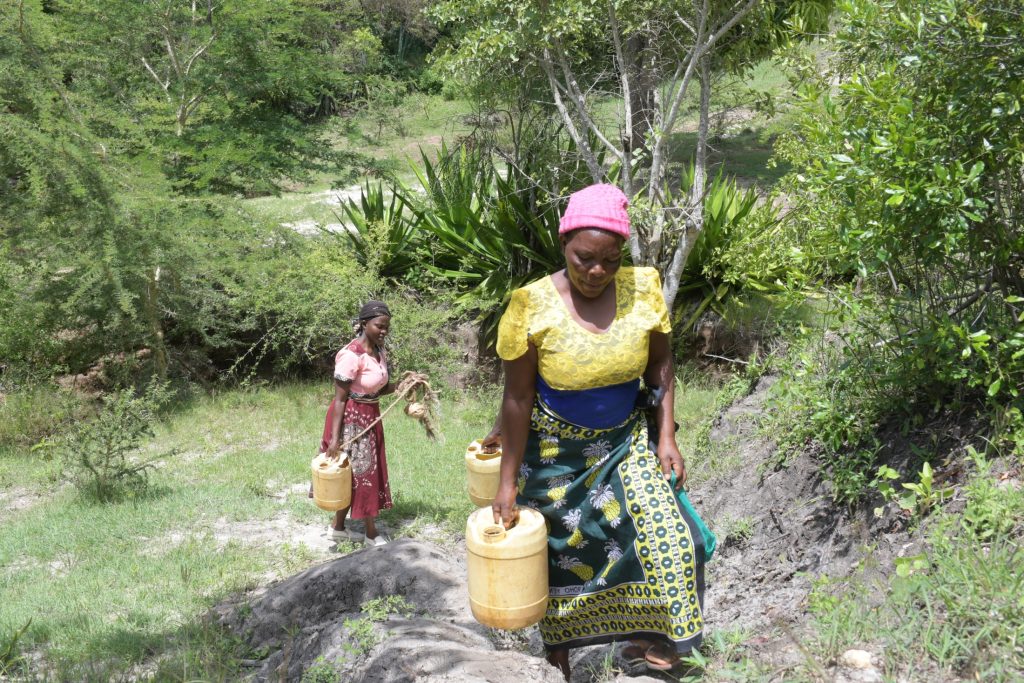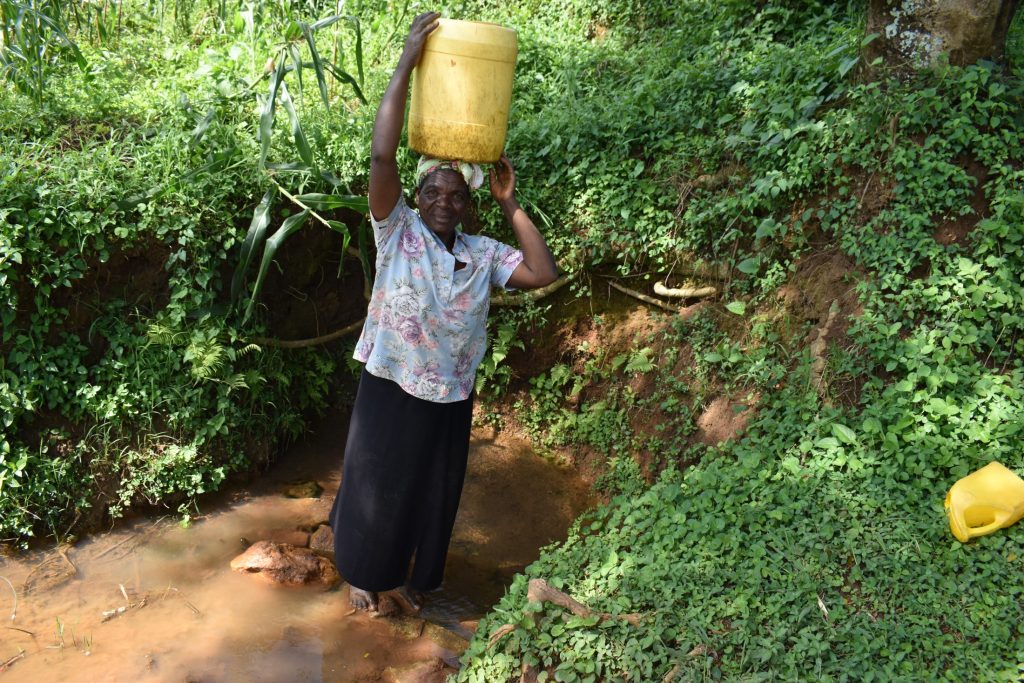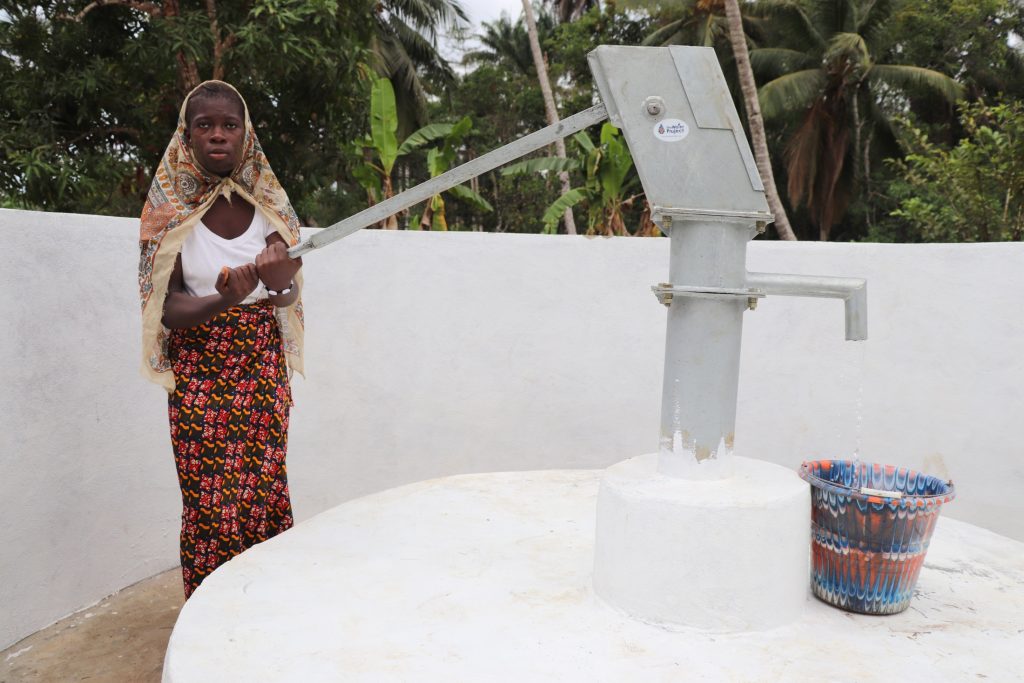The High Cost of Low Water: How Water Access Fuels Economic Growth
Imagine if every day you woke up and knew your entire morning would be spent walking to and from a faraway water source, or standing in line at an overcrowded water source. Hours of time lost — just for one basic necessity that everyone has the right to.
Without enough water, you can’t grow food, you can’t build housing, you can’t stay healthy, you can’t stay in school, and you can’t keep working. A lack of water makes breaking out of the cycle of poverty impossible.
Why is Water Scarce?
Physical Scarcity
In some of our work areas, such as semi-arid Southeast Kenya, water is physically scarce: there are not enough sources of water underground, on the Earth’s surface, or from rain. This presents an economic problem because only money can create water sources where they don’t naturally occur or import water from faraway sources.
“Tending to my children is already difficult, but I have to bear [the] burden and fetch water for drinking and preparing their meals,” said 35-year-old Rhoda from Kavililu Community in Southeast Kenya.

“I get tired from walking to the river and coming back home, and most times, I am too exhausted to conduct household chores, let alone farming or preparing [the] land. Although I keep a kitchen garden, irrigating it is difficult because water is used sparingly.”
In wealthier nations like the U.S., we have dry regions and water stress, too. However, water authorities often handle the sourcing of water, so the layperson rarely worries about where their water comes from. The difference is money.
Economic Scarcity
In our other service areas (Western Kenya, Sierra Leone, and Uganda), there is enough water to go around, but people lack the resources to access clean water. People living in these regions end up accessing surface water sources like rivers, streams, scoop holes, and ponds where clean water isn’t available. These surface sources are often contaminated by environmental factors, which makes the people who drink the water sick and forces them to spend their income on medication and hospital visits rather than installing new clean water sources.
Globally, at least 1.8 billion people use a drinking-water source contaminated with faeces.
WHO
“Two years ago, I was diagnosed with typhoid, [and] the journey to recovery was not a walk in the park,” said Erina from Nangurunya Community in Western Kenya.

“I sought medical attention in our local health unit. By the time I was recovering, all my personal savings had been consumed, and [I] even got into debt.”
Water-Fetching Steals Time, Energy, and Opportunities (Especially for Females)
The lack of enough clean water commandeers hours of productivity on a daily basis, primarily from women and girls, who fetch water in more than half of all households in sub-Saharan Africa. The UN estimates that women and girls lose 200 million hours per day fetching water worldwide.
This represents hours of unpaid work every day, which, economically speaking, is inefficient and unproductive. This also presents a significant opportunity cost: so much time spent walking to and from water sources or waiting in line for water could be invested in education, money-making, or even rest.
Girls are disproportionately affected by water collection duties, leading to their higher dropout rates and foregone educational opportunities. This not only limits their personal and professional development, but also perpetuates cycles of poverty and gender inequality.
When girls grow up and have families of their own, they have fewer options with which to dig themselves out of poverty. Women and girls often respond positively to The Water Project’s hygiene and sanitation training because the lessons on soap-making present an opportunity to start soap-making businesses out of their homes.
“As a young girl growing up in the village, work is my middle name,” said 16-year-old Maseray from Forikolo Community in Sierra Leone. “I work day and night, from one chore to the other, spending most of the time fetching water and doing laundry.”

But water scarcity affects everyone, not just women and girls.
A Lack of Water Hurts Farming, Which Hurts Income
Agriculture is one of the primary ways people provide for themselves in sub-Saharan Africa. Where water is physically scarce or far away, farming becomes difficult, threatening food security and exacerbating poverty.
The lack of water stymies households’ abilities to grow sufficient crops to feed themselves, let alone to create a surplus to sell at market. This form of farming is highly dependent on natural weather conditions, including rainfall, making it particularly vulnerable to water scarcity.
“We have a serious water scarcity problem in our community,” shared 49-year-old Caroline Mwathai Mumbu from Kilela Community in Southeast Kenya.
“I get tired from waking up every morning to fetch water from the distant Ndatani River. I often return home towards late afternoon with little energy and time to focus on activities like tending to my goats. I often manage to prepare a meal or two per day because of the water shortage. During short rains like this one, I manage to do a lot of farming; for instance, I have a kitchen garden and planted maize on my farm. I hope they will not dry up when the drought season begins, as is usually the case.”
Families living in poverty often lack the resources to invest in efficient water use or improved farming techniques, making them more susceptible to the impacts of water scarcity. This vulnerability results in lower agricultural yields, which in turn leads to food insecurity, reduced income, and less opportunity to invest in education or health care.
Water Access Alleviates Poverty
Water is so fundamental to life. Living without enough of it traps people in poverty. But water changes that — and you can provide water.
We tend to think of poverty as an inescapable, systemic issue: one we can’t easily affect one way or another. But as we have witnessed time and time again, with water, people can climb out of poverty and into a new way of living.
When you help us build water projects, you fund sustainable agriculture. You help children stay in school instead of collecting dirty water all day. You give parents time to care for their families, expand their gardens and farms, and even run small businesses. Said simply: the gift of water is a gift of life.
Home More Like ThisTweet